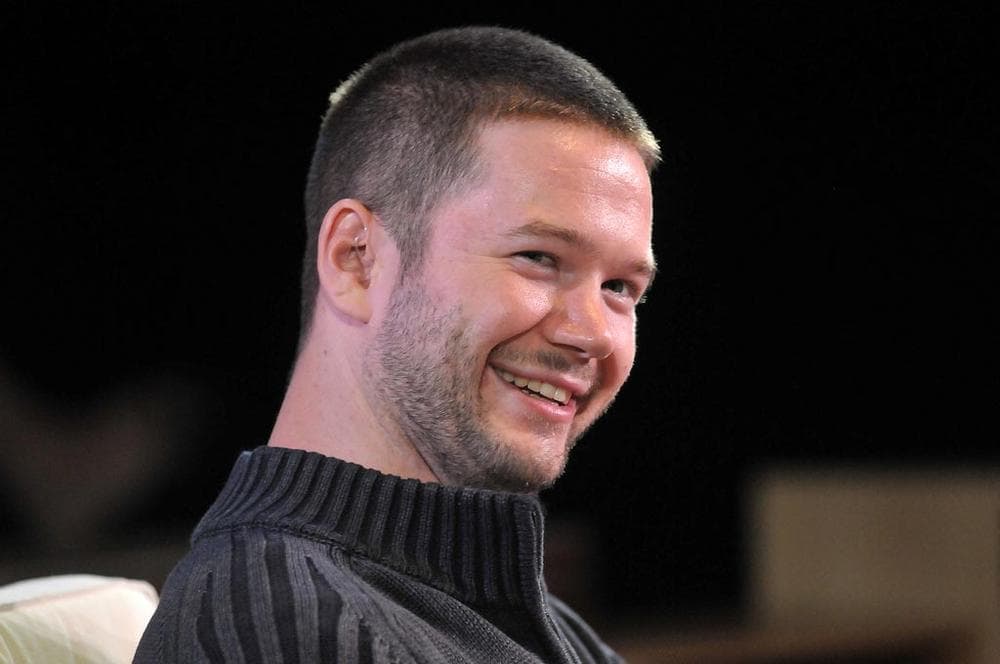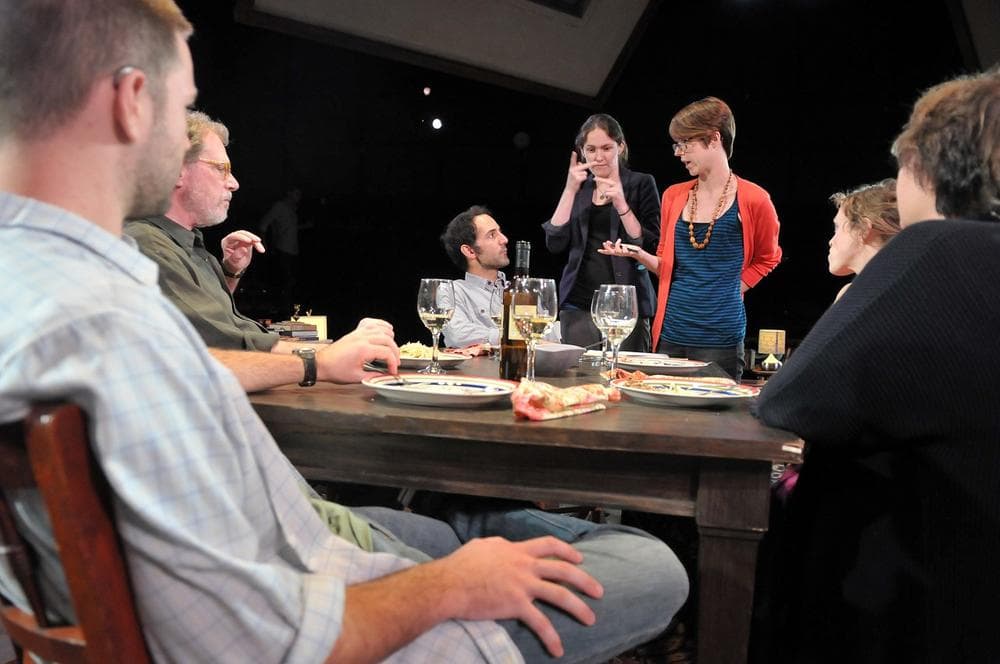Advertisement
Deaf Actor James Caverly Brings His World Center Stage In 'Tribes'
James Caverly has a few things in common with Billy, his character in the SpeakEasy Stage Company production of “Tribes” (at the Calderwood Pavilion through Oct. 19). They were both born deaf, each went to mainstream schools, and they both face challenges in a world designed for people who can hear.
Sitting at a dining room table on the set in the Calderwood Pavilion, the 24-year-old Caverly spoke through his onstage sign language interpreter Christopher Robinson.

“I think the difference between myself and Billy is that he’s exceptionally empathetic,” Caverly said through Robinson, and they both laughed.
“I’m going to be a little bit raw about myself,” the actor continued. “I aspire to be that way, but I’m not there yet.”
Caverly’s hands and fingers engaged in a graceful dance with his interpreter. Through American Sign Language, or ASL, the actor shared a frustration he has with what he sees as the condescending way film and television portray deaf people.
“That they’re the problem, they’re the issue in the story that needs to be fixed, and frankly I’m just not feeling that that’s the lens that the world needs to see,” he said. "And frankly I’m just sick of it. So I saw an advertisement about ‘Tribes,’ and I saw that the story was about family dynamics, and included in the story happened to be a story about a deaf person.”
“Tribes” was penned by British playwright Nina Raine. The plot is about a lot of things, especially Billy’s relationship with his intellectual, incredibly verbose family. Billy’s parents have attempted to assimilate their deaf son by forcing him to read lips rather than learn to sign. Conflict arises when Billy meets Sylvia, a young woman who is losing her hearing. She teaches him to sign and introduces him to people more like him. In one scene she speaks to Billy’s father about his son.
Advertisement
Sylvia: When I first met him I didn’t realize he was deaf, his lip reading was so good.
Father: Yes, well we didn’t bring Billy up as handicapped; we brought him up as if he were hearing. Although some deaf people would say that is bringing him up as handicapped.
During our interview, Caverly reflected on the play’s meaning, why he was attracted to the role and what he hopes audiences will take away from “Tribes.”
“Billy is being divided between two different tribes — one being his family and the deaf world. And where does he have a connection? So those questions paralleled what I see in society today," he said. "People are looking for their own tribe — everyone is.”

Director M. Bevin O’Gara admitted she tried to learn how to sign, but relies heavily on interpreters to make this play work. This is actually her third production featuring deaf actors. While there’s a risk that her intentions can be lost in translation, she says directing isn't about words.
“It’s about shapes and space. You know, acting is not about words either. It’s about how much emotion can you convey to your audience," she said. "And actually there’s something about working with deaf actors that I have found is that they’re tapped into something emotionally.”
Caverly says signing is very similar to acting.
“As a deaf person I’m already invested in communicating through my body," he said. "And when I’m on stage it’s really easy for me to find that piece of emotion because I do it on a day to day basis.”
Even during our interview every sentence Caverly and his interpreter expressed was animated and beautiful. Interpreters and signing are used throughout the play, and surtitles are projected on screens above the stage for the audience. But Caverly also has spoken parts which he said are challenging.
“This is my first speaking role, but don’t get me wrong, I’m also scared of signing on the stage as well,” he said, laughing.
Caverly told me he doesn’t like to speak much, but like many actors he’s been an attention-seeker since he was a kid. He got serious about acting in high school, did theater as a student at Gallaudet University, and performed with the National Theatre of the Deaf.
But now the 24-year-old trained, deaf actor struggles to find work. Things are improving though, he said, because technology and the internet have created more opportunities for actors who can’t hear.
O’Gara said she’s already plotting her next play with deaf theater professionals in the cast and crew — and she has her eye on James Caverly.

SpeakEasy Stage Company's “Tribes” is running at the Boston Center for the Arts’ Calderwood Pavilion through Oct. 19.
Listen to the audio version of this story here:
Previously:
This program aired on September 26, 2013. The audio for this program is not available.
